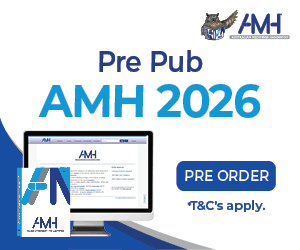Nurse-to-patient ratios introduced in Queensland almost five years ago has shown to prevent readmission, shorten hospital stays, reduce deaths and significantly save costs, according to new research.
The study, Effects of nurse-to-patient ratio legislation on nurse staffing and patient mortality, readmissions, and length of stay: a prospective study in a panel of hospitals, was conducted by Queensland University of Technology’s (QUT) School of Nursing and the University of Pennsylvania’s Center for Health Outcomes and Policy Research (CHOPR) in the US.
The research is the first prospective evaluation of health policy aimed at boosting nurse numbers in hospitals to ensure a minimum safe standard.
Undertaking the study, researchers analysed data from Queensland public hospitals, which introduced Nurse-to-patient legislation in 2016 and was only the fourth government in the world to make ratios law.
Under the legislation, nurses must directly care for a maximum of four patients on morning and afternoon shifts and no more than seven patients on night shifts.
Legislated nurse-to-patient ratios in the state’s public hospitals came about when the union and its 65,000 members persistently campaigned for their introduction said, Queensland Midwives’ Union Secretary Beth Mohle.
Researchers collected data from 17,000 nurses and analysed outcomes for more than 400,000 patients based on before and after the legislation was introduced from Queensland’s public hospitals. The data was then evaluated to determine the effects of nurse to patient ratios on staffing levels and patient outcomes and whether both were associated.
The results showed145 fewer deaths, 255 fewer readmissions, and 29,222 fewer hospital days than if they had not implemented the policy.
In addition to producing better outcomes, the costs avoided due to fewer readmissions and shorter length of stay were more than twice the cost of additional nursing staff.
According to the researchers, the findings will help inform policy on strategies to improve nursing levels, which has remained debated worldwide in the absence of data on the long-term effects, costs, and limited resources.
QUT’s Professor Patsy Yates quoted in the Lancet said part of the reluctance to bring in a minimum nurse-patient ratio mandate from some policy-makers was the expected rise in costs from increased staffing.
“Our findings suggest that this is short-sighted and that the savings created by preventing readmissions and reducing length of stay were more than twice the cost of employing the additional nurses needed to meet the required staffing levels- a clear return on investment. Often, policy-makers are concerned about whether they can afford to implement such a policy. We would encourage governments to look at these figures and consider if they can afford not to,” she said.
Ms Mohle said ratios in Queensland have since saved 145 lives and up to $70 million taxpayer dollars adding that Queenslanders should be aware of and celebrate this incredible initiative.
“This change was led by nurses who are on the frontline, both during COVID-19 and every day. The successful implementation of ratios in Queensland Health medical and surgical wards shows nurse insight can save lives and valuable tax dollars.”
The study was recently published in the Lancet.








